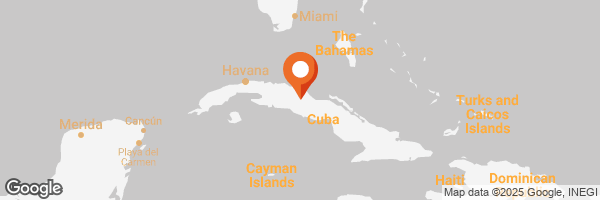Hello world travelers!
How about we take a tour of downtown Santa Clara, my hometown? Okay? Well, first, let's take a sip of water—it's quite hot here, which is why I'm bringing you here at night this time—let's breathe, smile, and walk. As the poet Antonio Machado said: Walker, there is no path, the path is made by walking.
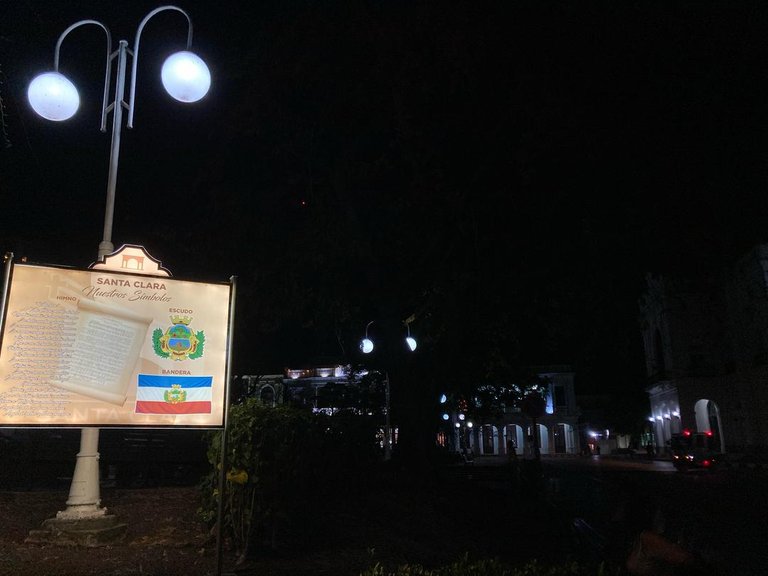
Right in the center of Santa Clara, in Villa Clara province, Cuba, lies Leoncio Vidal Park, a place I invite you to take a short stroll through.
This park, which dates back to the 17th century, has several access points. Now, we begin our tour at the northeast corner, on a night when darkness reigns over almost the entire plaza and its surroundings, but that doesn't stop us from enjoying some views that I'm sure you'll enjoy.
As you can see, on this corner, we discover a beautiful sign showing us the city's historical symbols. These elements, unfortunately, are unknown to many passersby, despite being in the public eye.
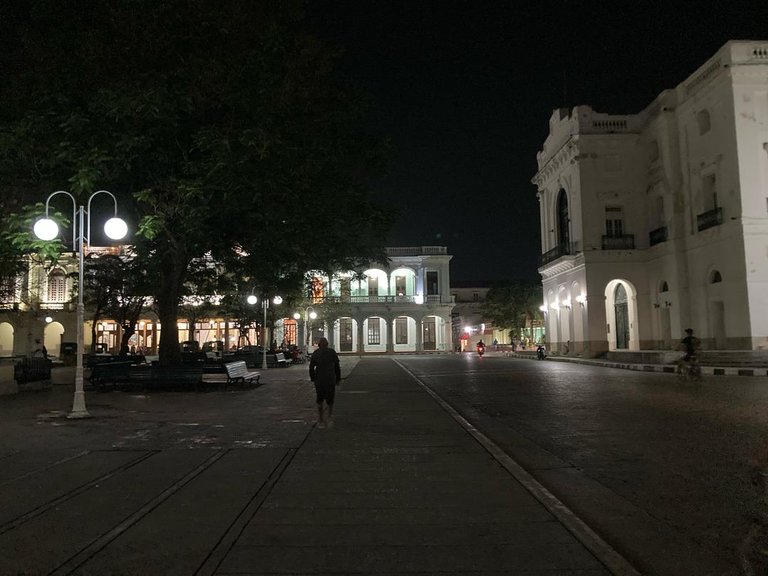
Fortunately, as we began our tour, the power was restored, allowing us to get a better view of the night.
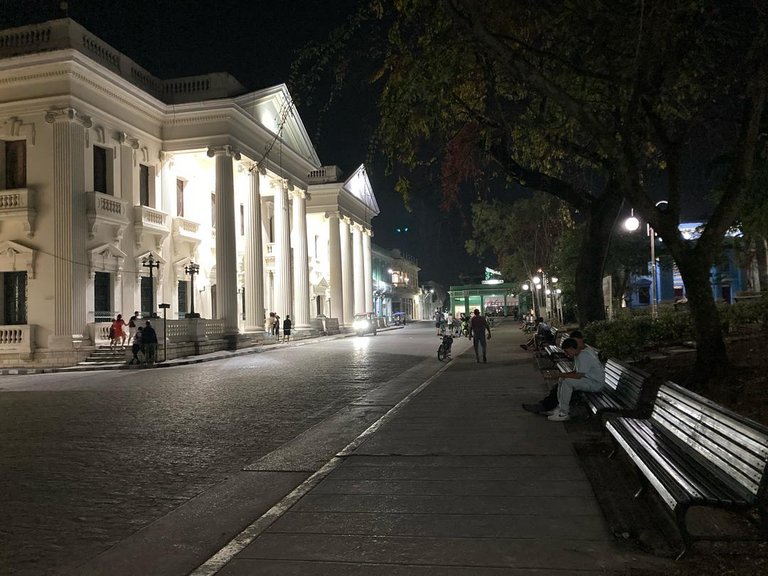
In the image above, you can see an eclectic building with a predominantly neoclassical structure in what was once the Government Palace, now a public library. Construction was completed in 1912 after demolishing a barracks that existed on the site.
Now we continue the tour, stopping at what we popularly call "the corridor," a wide entrance to the central roundabout, which was once the iconic traditional home of the concert bands that livened up the evenings for everyone to enjoy with their excellent music.
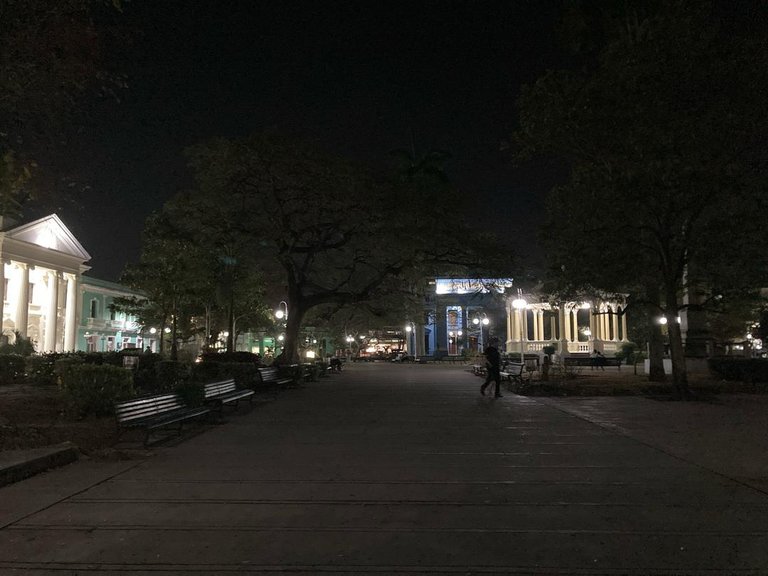
A few meters further on is the Niño de la Bota fountain. Although it's not the original, the tradition of preserving this important cultural element, which has been here for exactly 100 years, has been maintained over the years.
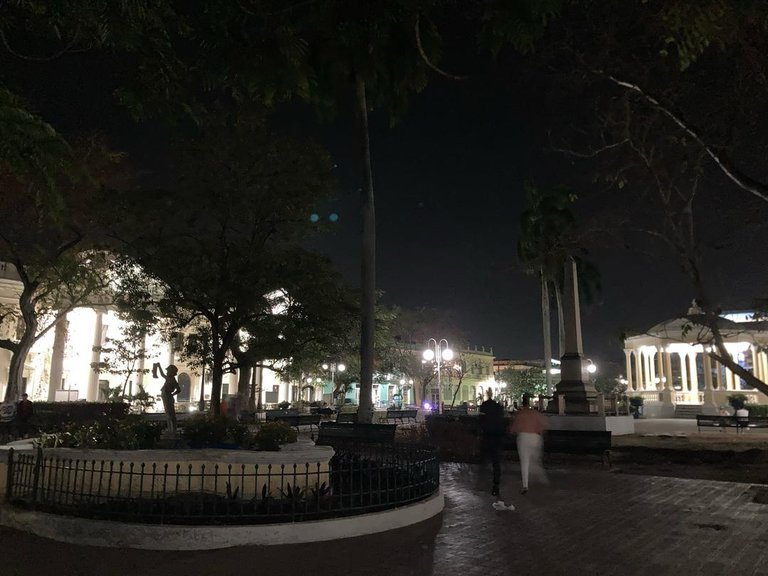
You'll notice the low number of people in what should be considered a busy urban center...
Undoubtedly, we miss the days when this park was always packed with people of all ages wandering around at all hours. Today, it's hard not to see it practically empty.
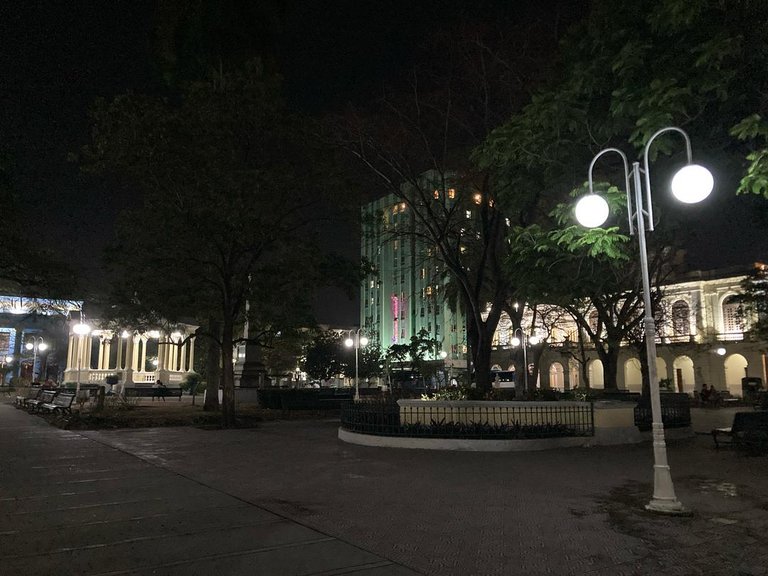
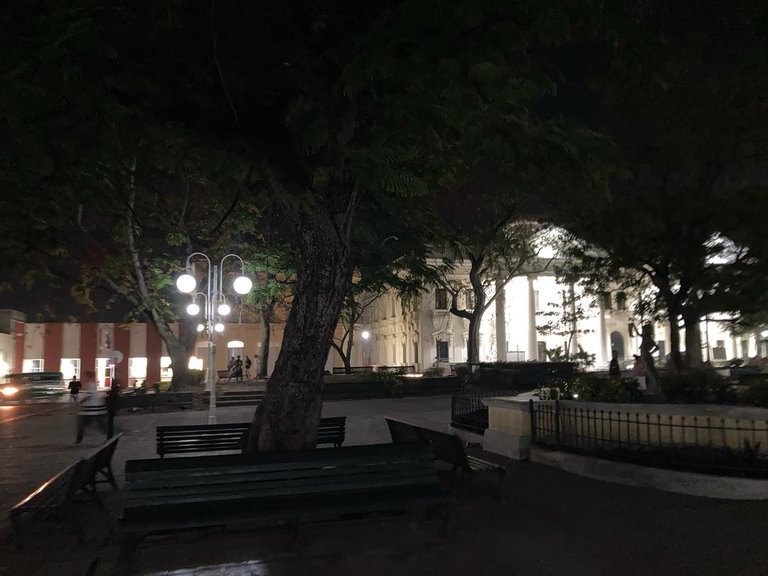
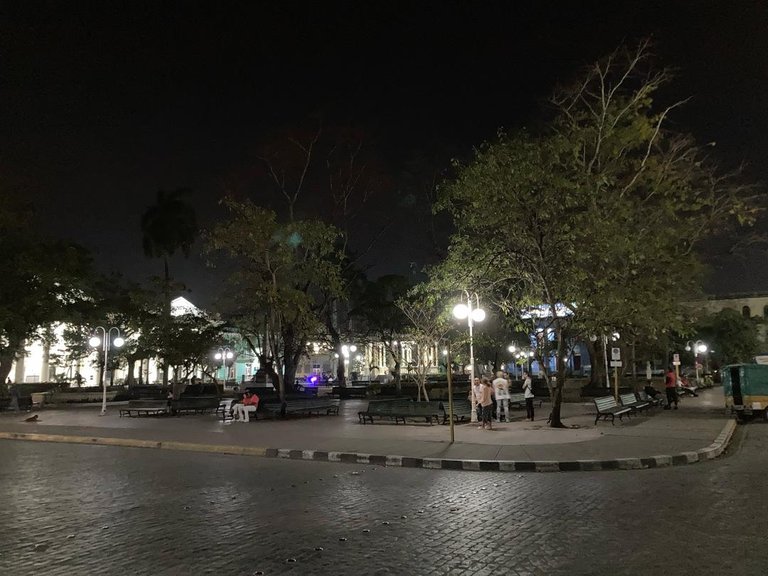
As a significant identifying feature, I hope you've noticed the cobblestones that make up the streets surrounding this beautiful park. Cobblestones that date back more than a century and give it a unique character that everyone celebrates.

Well, we've arrived at the Hotel Central, opened in 1929, whose main attraction is its interior, where you can appreciate the Carrara marble staircase that complements its sublime magnitude in terms of the beauty of its design.
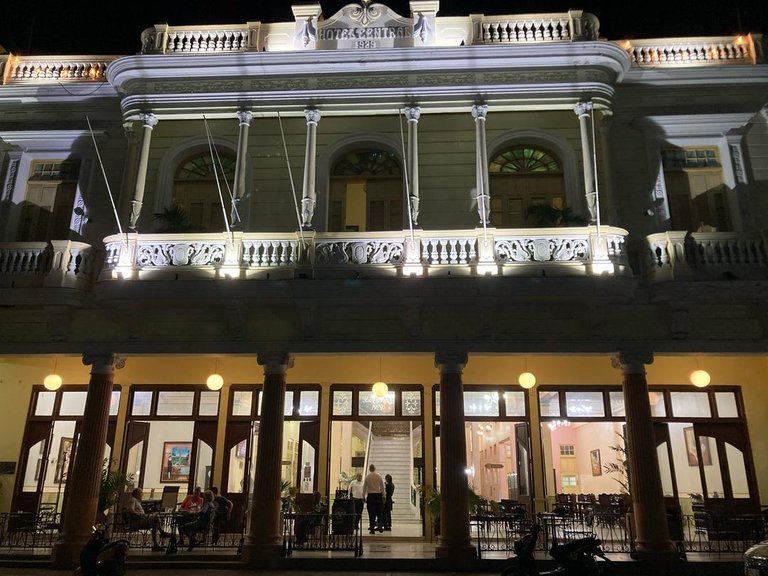
Continuing along the path, you can see one of the flowerbeds or green areas that characterize the park with its leafy trees, which few know represent each season of the year.

We're now nearing the end of this first trip. We'll repeat the journey another time, but during the day, discovering new features that will surely please many.
First, let's enjoy the details of this building with neoclassical influences. Today, the Juan Marinello Cultural Center, a former artistic high school founded in 1927, whose greatest historical distinction lies in the fact that for years it housed a cult to José Martí, even celebrating what was called La Cena Martiana for the first time in Cuba.
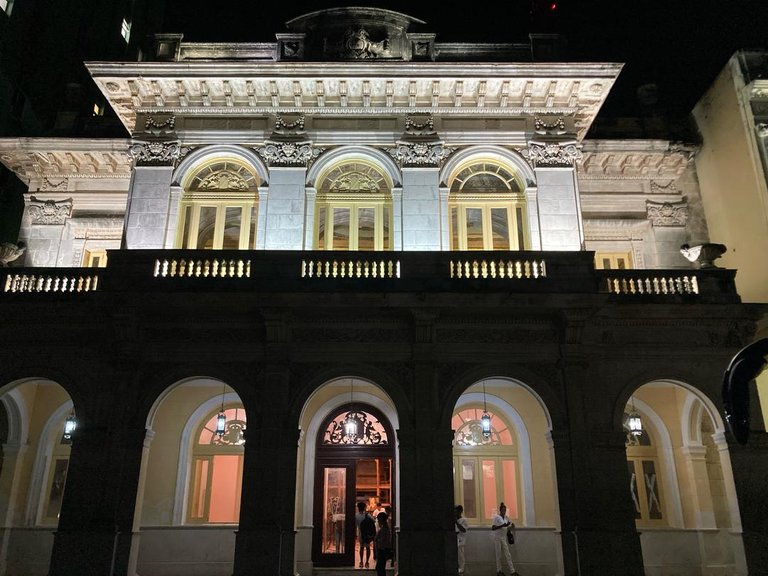
And we arrive at the only modern building surrounding the park, the Hotel Santa Clara Libre, completed in 1954.
Its greatest attraction, besides the movie theaters it still has, was that it was the tallest building in the province for many years, at 11 stories tall. Its height, plus its exact location, adds a distinctly fresh air to its exterior, thanks to the effect of its "air box," which significantly lowers the temperature in its vicinity.
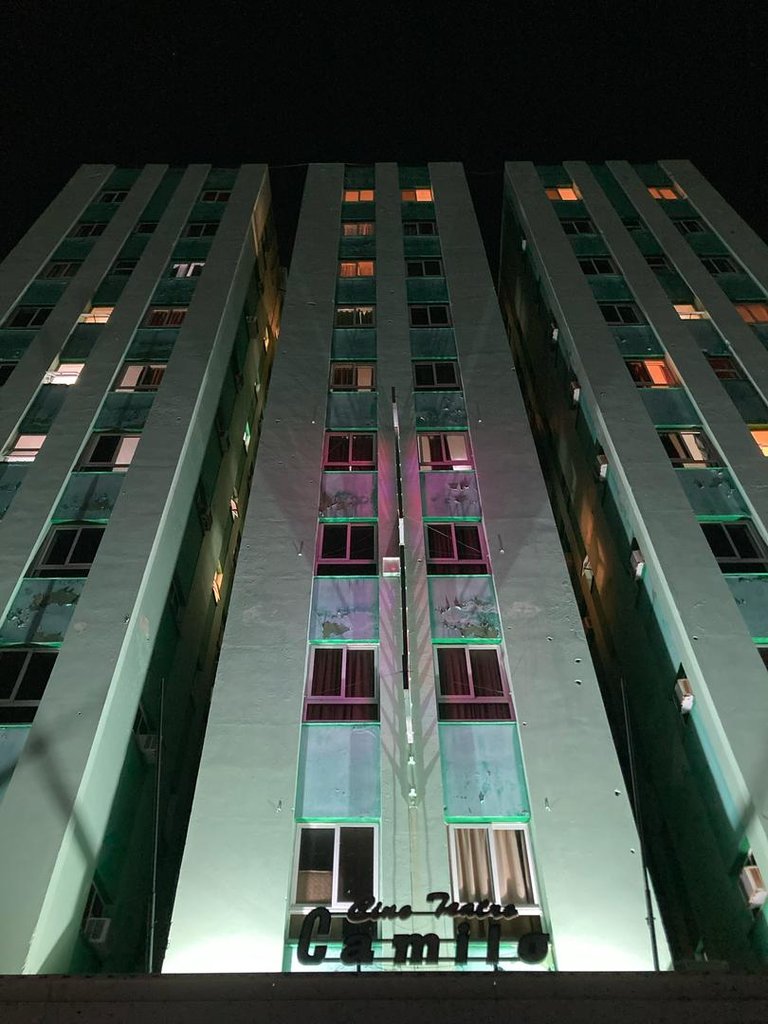
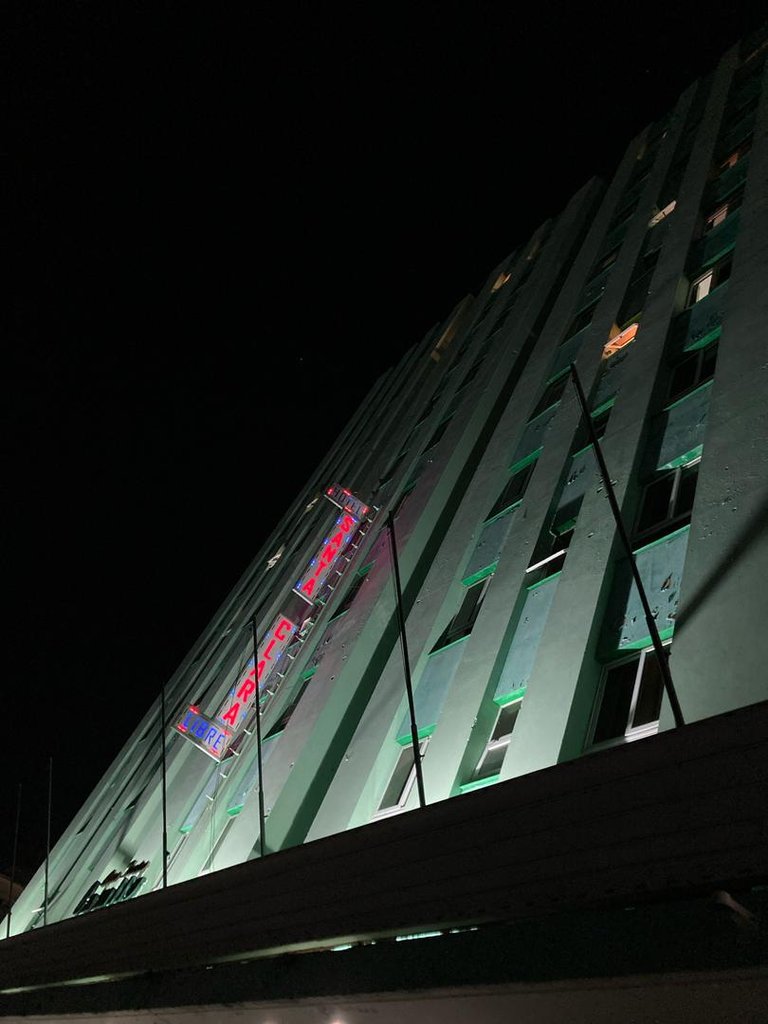
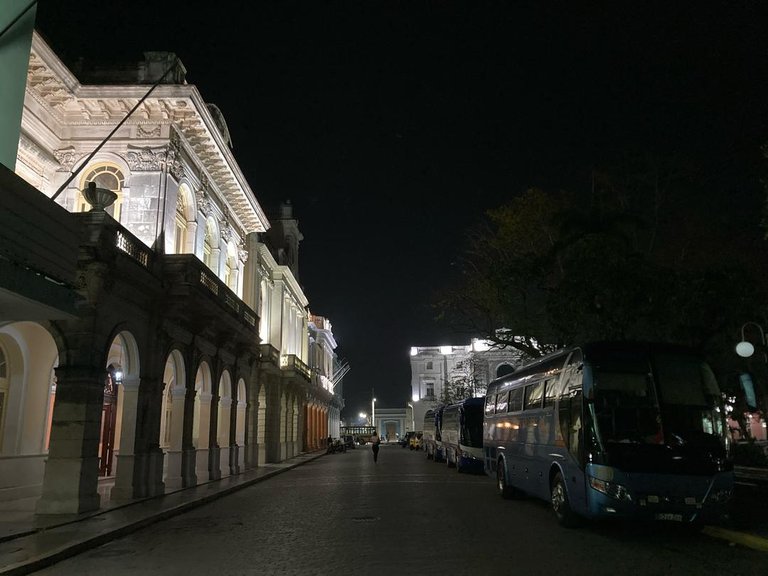
We conclude the tour for now. We take one last look back, through these columns and their portals, and say:
See you next time!
Don't stop smiling!
I hope you enjoyed it!
See you on the next travel!
This post was partially translated using Google Translate and photographs taken with an iPhone ES and edited in Adobe Illustrator.

I invite you to visit the project DRIP - WITNESS NODE - BPUD

Support the witness and vote for TheBbhProject! Project carried out by @bradleyarrow

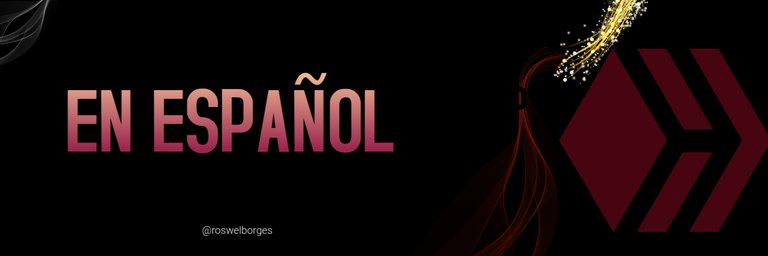
¡Hola viajeros del mundo!
¿Qué les parece si damos un recorrido por lo que constituye el centro de Santa Clara, mi ciudad de residencia? ¿Sí? Pues antes tomemos un sorbo de agua —acá el calor es significativo y por eso les traigo de noche en esta ocasión—,respiremos, a sonreír y a caminar que, como dijo el poeta Antonio Machado: caminante no hay camino, se hace camino al andar.

Justo en el centro de Santa Clara, en la provincia Villa Clara, Cuba, se encuentra el Parque Leoncio Vidal, sitio a donde les invito a dar una pequeña vuelta.
Este parque, cuya origen data del siglo XVII, tiene varios puntos de acceso. Ahora, iniciamos el recorrido por la esquina noreste, en una noche donde prima la oscuridad casi en la totalidad de la plaza y sus alrededores, pero ello no nos impide que disfrutemos de algunas vistas que estoy seguro disfrutarán.
Como pueden percibir, en esta esquina descubrimos un cartel hermoso que nos muestra los símbolos históricos de la ciudad. Elementos que lamentablemente se desconocen por muchos transeúntes, a pesar de encontrarse a la luz pública.

Afortunadamente, mientras iniciaba el recorrido, se restableció la electricidad, lo que nos permite discernir una mejor panorámica nocturna.

En la imagen superior pueden apreciar una edificación de corte ecléctico con predominio neoclásico en su estructura en lo que fuese antaño Palacio de Gobierno, hoy biblioteca pública, cuya construcción concluyó en 1912 luego de demoler un cuartel que existía en el sitio.
Ahora proseguimos el recorrido deteniéndonos en lo que popularmente llamamos el pasillo, una amplia entrada hacia la glorieta central que fuera icónica sede tradicional de las bandas de concierto que amenizaban las tardes para disfrute de todos con su música de excelencia.

Unos metros más adelante, se encuentra la fuente del Niño de la Bota. Si bien no es la original, se ha mantenido a través de los años la tradición de conservar este elemento cultural de relevancia que cumple justamente 100 años de instaurada acá.

Notarán la poca afluencia de personas en lo que debería suponerse un centro urbano de relevante actividad...
Sin dudas, se extrañan los tiempos en que siempre permanecía lleno este parque con personas de todas las edades transitándolo a cualquier horario. Hoy, resulta difícil no verle prácticamente vacío.



Como aspecto significativamente identitario, espero hayan percibido los adoquines que conforman las calles rodeando a este hermoso parque. Adoquines que sobrepasan el siglo y le confieren un carácter peculiar que todos celebran.

Bien, hemos llegado al Hotel Central, inaugurado en 1929 y cuya mayor atracción está en su interior, donde pueden apreciar la escalera de mármol de Carrara que complementa su excelsa magnitud en lo cuanto a lo bello en su diseño se refiere.

Continuando el camino, pueden ver uno de los canteros o áreas verdes que caracterizan al parque con sus árboles frondosos y que pocos conocen representan cada estación del año.

Ya estamos llegando al final de este primer viaje, repetiremos el viaje en otra ocasión, pero de día y descubriendo nuevas especificidades que serán del agrado seguramente de muchos.
Antes, disfrutemos de los detalles que ofrece este edificio con influencias neoclásicas. Hoy día Casa de Cultura Juan Marinello, antiguo Liceo artístico fundado en 1927 y cuya mayor peculiaridad histórica radica en abrigar en su interior, durante años, un culto a la figura de José Martí, celebrándose incluso por primera vez en Cuba lo que fuere llamado La Cena Martiana.

Y arribamos al único edificio moderno que rodea al parque, el Hotel Santa Clara Libre, concluido en 1954.
Su mayor atractivo consistía, además de las salas de cine que aún conserva, en resultar el edificio más alto de la provincia durante muchos años, con sus 11 pisos de altura. Precisamente la altura que posee, más el lugar exacto donde se erige, aporta un agregado climática en su exterior dotándole de una frescura inusual, gracias al efecto que provoca su caja de aire disminuyendo notablemente la temperatura en su cercanía.



Concluimos el recorrido por ahora. Damos una última mirada hacia atrás, a través de estas columnas y sus portales y decimos:
¡Hasta un próximo encuentro!
¡No dejen de sonreír!
¡Espero lo hayas disfrutado!
¡Nos vemos en el próximo viaje!
Este post fue traducido en parte con ayuda de la herramienta que ofrece Google Translate y las fotografías realizadas con un Iphone ES y editadas en Adobe Illustrator.

Te invito a visitar el proyecto. DRIP - WITNESS NODE - BPUD

Apoya y vota por TheBbhProject! Proyecto realizado por @bradleyarrow

